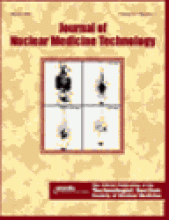The Intersocietal Commission for the Accreditation of Nuclear Medicine Laboratories (ICANL) has added a mandatory site visit to its accreditation process, both for first time accreditation and re-accreditation. As this is a relatively recent development (since July 2002), this article will explain what site personnel can expect during a site visit and detail some of the areas that have been most problematic.
Over 30 technologists, physicians and scientists have undergone the ICANL standardized site visitor training course. In the vast majority of cases, the site visit is accomplished by one site visitor in less than 1 day, usually within approximately 6 hours. At some hospitals or outpatient centers with unusually complex activities or multiple testing locations, the visit may take longer.
It should be noted that the site visitor, in order to maintain an unbiased perspective, has not seen nor reviewed any of the materials submitted to the ICANL. The site visitor thus begins the interview with little knowledge of the applicant’s facility.
What follows is a brief overview of the materials the site visitor will review or observe. This is not intended to be exhaustive but highlights some of the important aspects of the visit:
Physical facility and equipment
Personnel functions/qualifications
Procedures
Records (administrative, radiation safety, protocol and equipment QC manuals; dosage, wipe tests, electrical safety, and defibrillator check records)
Images and reports (the site visitor will randomly select 5–10 patient studies at the time of the visit).
The majority of problems have centered on the following areas:
Protocols
The intention of protocols is to provide a detailed “road map” of the way studies are performed in the laboratory. Boilerplate and generalizations are not satisfactory. The protocols need to be a step-by-step description of each procedure performed. Protocols should be camera- and computer- specific. Examples are available at www.icanl.org.
Clinical Reports
Some of the weaknesses noted in reports include incomplete demographic information (including sex), inadequate summarization of results, and lack of evidence of review/signature by the interpreting physician. There have also been instances of marked delay in report turnaround. For examples and model reports, an extensive document is available on the ICANL website and has been published in the Journal of Nuclear Cardiology (2000;7:397–400).
Quality Assurance (QA)
Documentation of QA activities has been a frequent area of deficiency, especially for non-university-affiliated sites. If a QA action is not recorded, the site visitor is unable to determine that it has occurred. All QA reports should be signed by the medical director. Both technical and physician monitors are required for ICANL certification. For technical QA, the optimal program may include a monitor of the quality of the technologists’ procedures. Examples of suitable monitors include the percentage of technical artifacts, number of patients that need to be re-imaged, the absence of motion on rotating images, etc. For physician QA, the percent of agreement on peer co-reads or the agreements with the gold standard are examples of adequate monitors. Participation in a phantom imaging program provides an integrated assessment of both technical and interpretive components and is valuable for demonstrating the quality of service provided.
Technologist/Physician CE
Lack of participation or documentation of relevant continuing education (CE) are frequent deficiencies. Recently, the ICANL Board added mandatory CE requirements for all technologist and physician site personnel to be instituted by 7/1/2003.
Records
The site visitor has limited time to spend at the facility therefore it helps if all records are readily available, signed, and organized. The site visitor may require help operating the computer system if this is used to interpret images.
While the site visitor’s exit summation represents an opportunity to communicate some of the laboratory’s strengths and weaknesses, the site visitor does not have the authority to accredit the program. The entire ICANL Board makes that decision after thorough review of the paper application and the site visit. A decision is made within 4 months of the application submission deadline. To date, over 30 sites visits have been conducted and have been well received by the laboratories. The majority of these sites have successfully been accredited.
Facilities interested in participating in the ICANL accreditation process may contact the ICANL at 410-872-0100 or www.icanl.org.







